Mexico City: Folk art skeletons, devils, and more at Museo de Arte Popular
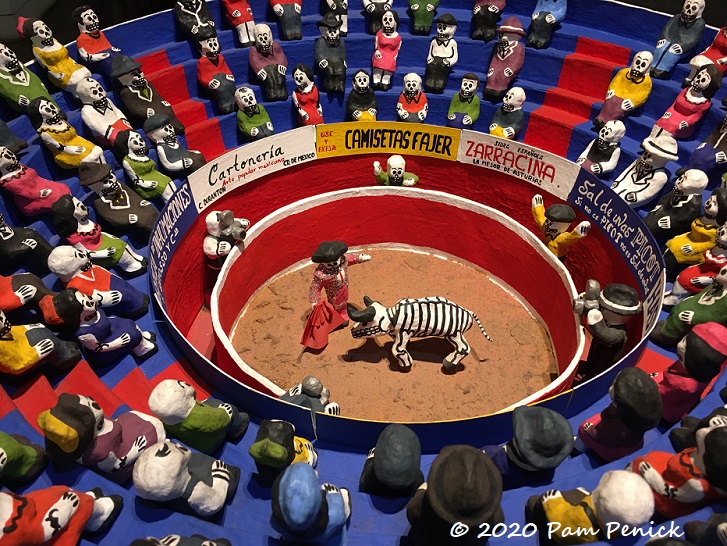
Skeletons may be macabre to American eyes, but they’re a popular motif in Mexican folk art, as we saw at the Museo de Arte Popular (Museum of Folk Art) in Mexico City. Housed in an Art Deco building in the historic center, the museum is perfectly sized to see everything in a couple of hours, and it also operates a very nice gift shop of regional handicrafts.
Día de Muertos art
Here in Austin, we’ve adopted Mexico’s joyful Day of the Dead celebration. So folk-art skeletons enjoying everyday activities aren’t unfamiliar to me. This well-attended skeleton bullfight (above) was a surprise though.
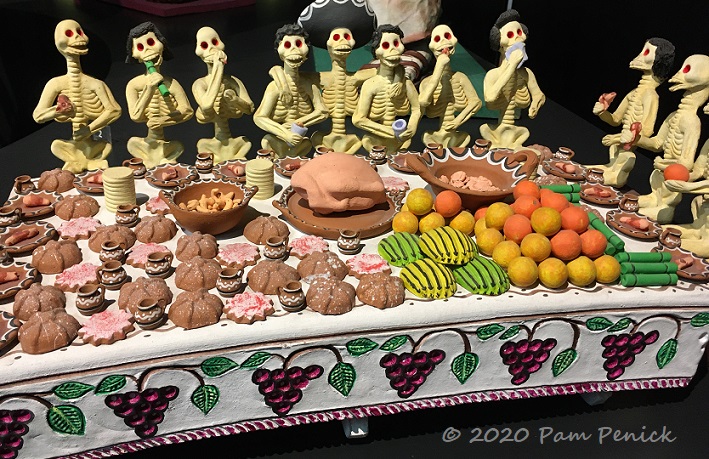
Check out the feast table for this convivial group of skeletons.
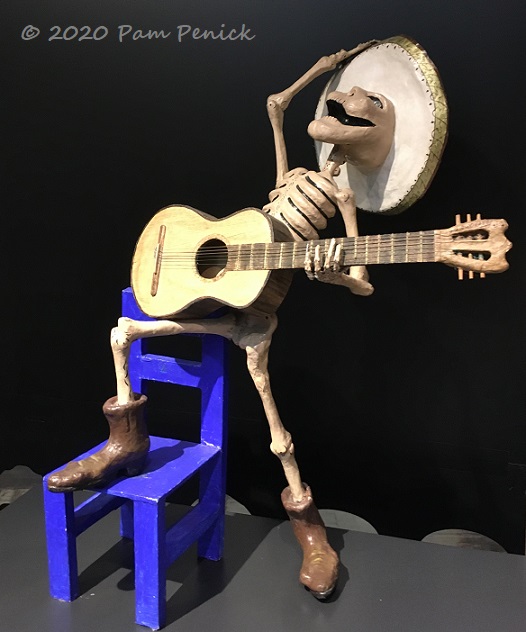
And how can you not love this guy’s exuberance? Does he remind you of Coco?
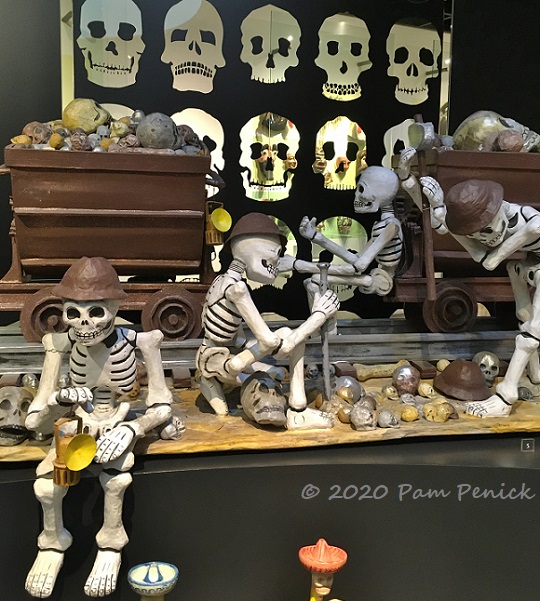
These skeleton miners are hard at work…
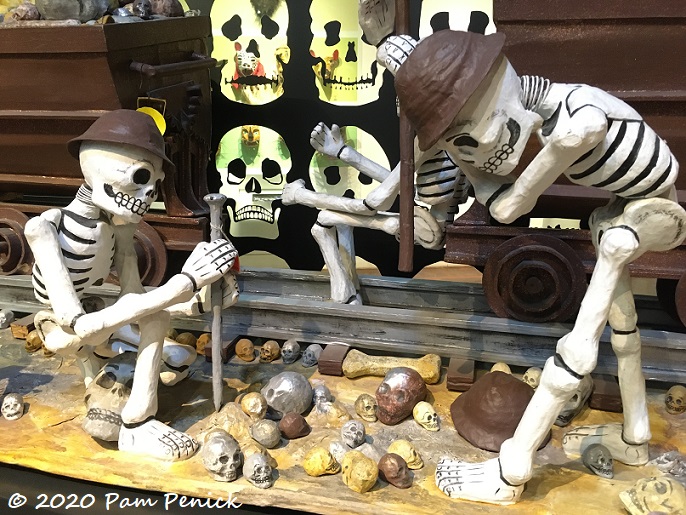
…mining for skulls.
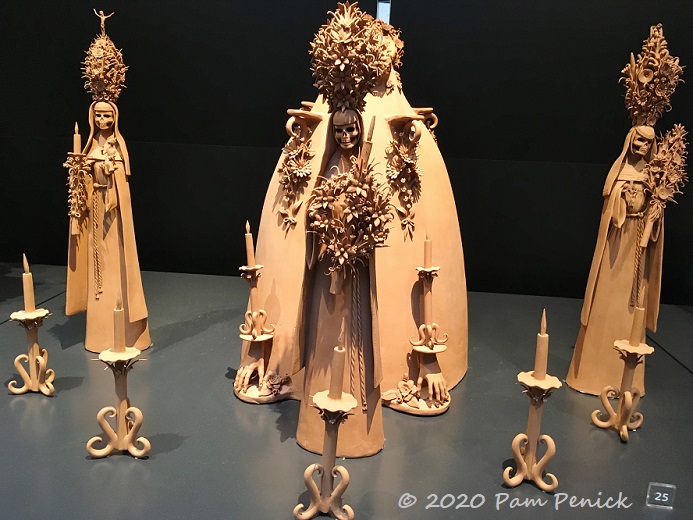
These clay skeleton women are beautiful if a little creepy. Check out the “hand”lesticks!
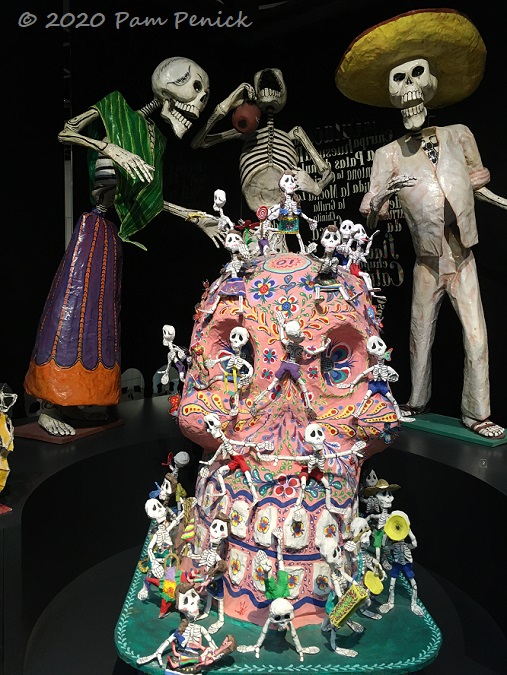
There’s a lot going on here, but it looks like a party.
Animal masks
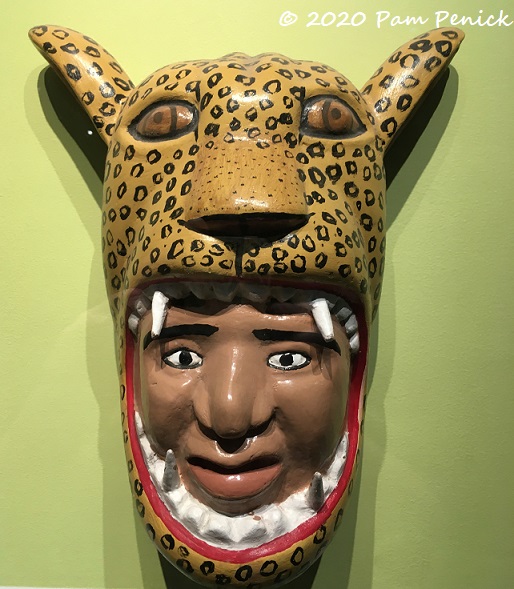
When your inner leopard comes out.
Devils
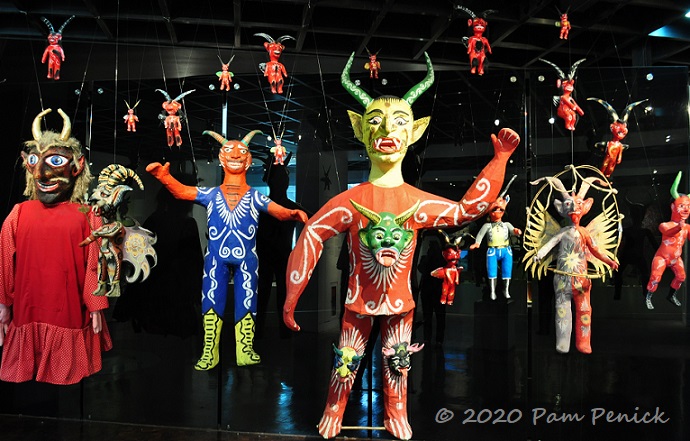
They say the devil is in the details.
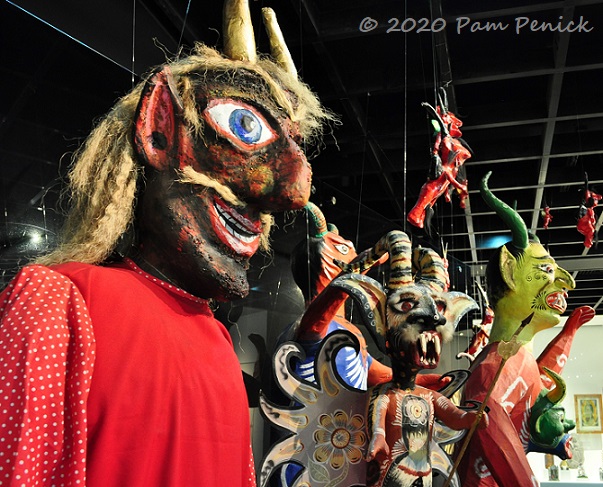
One whole room of horned devils offers an up-close look at the details.
Alebrijes
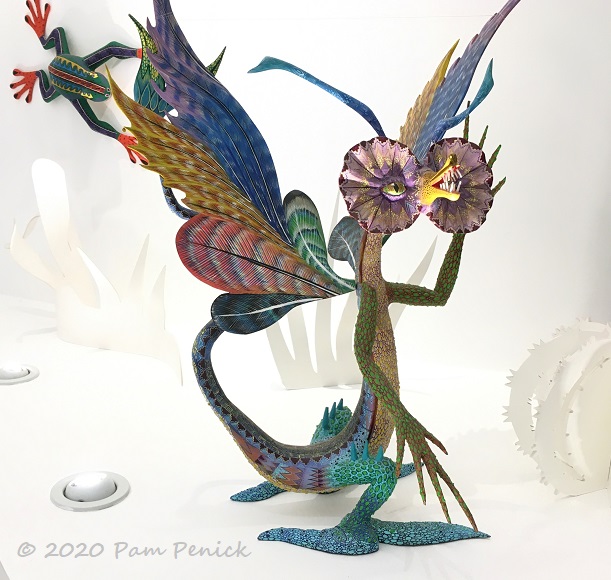
Beautiful alebrijes — fantastical folk-art creatures — are nicely displayed too. Notice the paper cacti and agaves making a subtle, regionally appropriate backdrop.
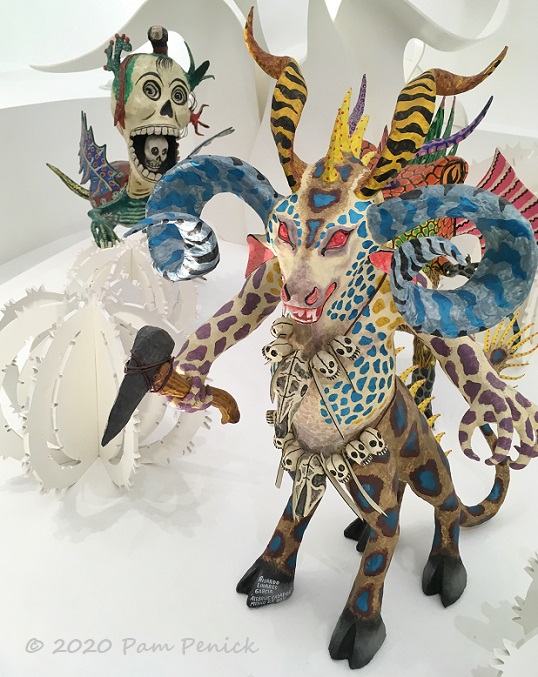
Huichol beadwork
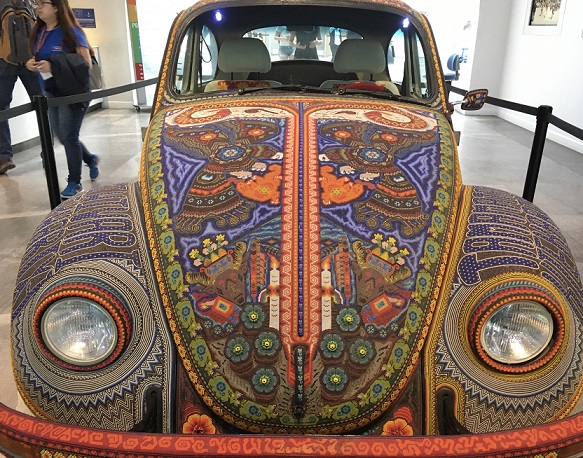
In the lobby we marveled over an elaborately beaded VW Beetle.
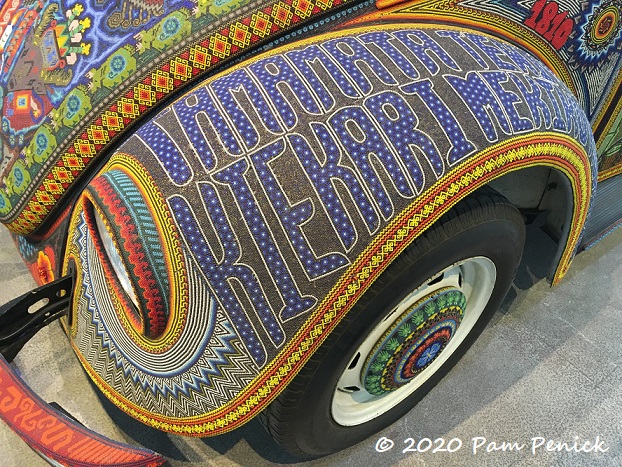
Every inch of the car’s exterior is mosaicked in tiny beads, even the hubcaps!
Kites
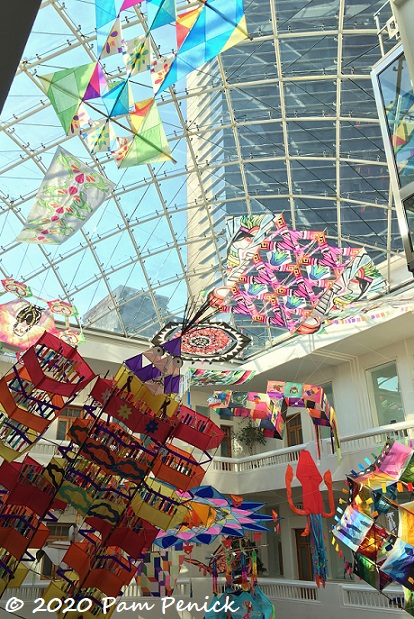
In the museum’s soaring atrium, colorful kites glow like stained glass and seem to float up into the sky.
Up next: A creative botanical garden at Bosque de Chapultepec, Mexico City’s enormous central park. For a look back at the ancient Teotihuacán pyramids, click here.
__________________________
Digging Deeper
Come learn about gardening and design at Garden Spark! I organize in-person talks by inspiring designers, landscape architects, authors, and gardeners a few times a year in Austin. These are limited-attendance events that sell out quickly, so join the Garden Spark email list to be notified in advance; simply click this link and ask to be added. Season 8 kicks off in fall 2024. Stay tuned for more info!
All material © 2025 by Pam Penick for Digging. Unauthorized reproduction prohibited.


Their folk art is absolutely amazing if not a little weird for someone from England, although I will say that a skull and crossbones often appeared on gravestone long ago. Did you learn about when it all got started? I think I like the Huichol beadwork the best.
The skull/skeleton motif dates back to the Aztecs or even earlier, I believe. It’s pretty fascinating as cultural traditions go. That beadwork was astonishing.
Exuberant to say the least! I’m loving all the photos from your Mexico trip. Thank you!
I’m glad to hear it, Ragna. Thanks for your comment!
The Alebrije are my favorite, I love the color and the creativity. My daughter and I had a great afternoon in that museum a few years ago. Mexico City is an amazing place!
It really is. There’s so much to see, and I feel we only scratched the surface.
The people that bead such large objects amaze me. All the time it must take. Also making all of those skeleton participants at the bull fight. An interesting group of art.
Lots of interesting pieces here, for sure.
Such lovely “throw back” photos to enjoy given that we are all currently sheltering in place and not traveling. Thanks for sharing a pleasant memory!
I’m glad you’re enjoying the virtual travel, Kay. Writing the posts is helping to keep me occupied during this time too.
Wow, just what I needed to feed my starved imagination today. Great photos which make me want to ask what kind of camera do you use? Surely not a cell phone?
I’m glad you enjoyed the post, Carol! I use both a 10-year-old Nikon D5000 and an old iPhone to take photos for my blog. Actually, cell phones these days can take high-quality images that rival DSLR cameras, and I’d love to upgrade my phone to get a better phone-camera. But may I humbly suggest that it’s not the equipment so much as the photographer that makes a good photo, like a chef who uses whatever pan and stove are at hand to cook up something tasty. 🙂